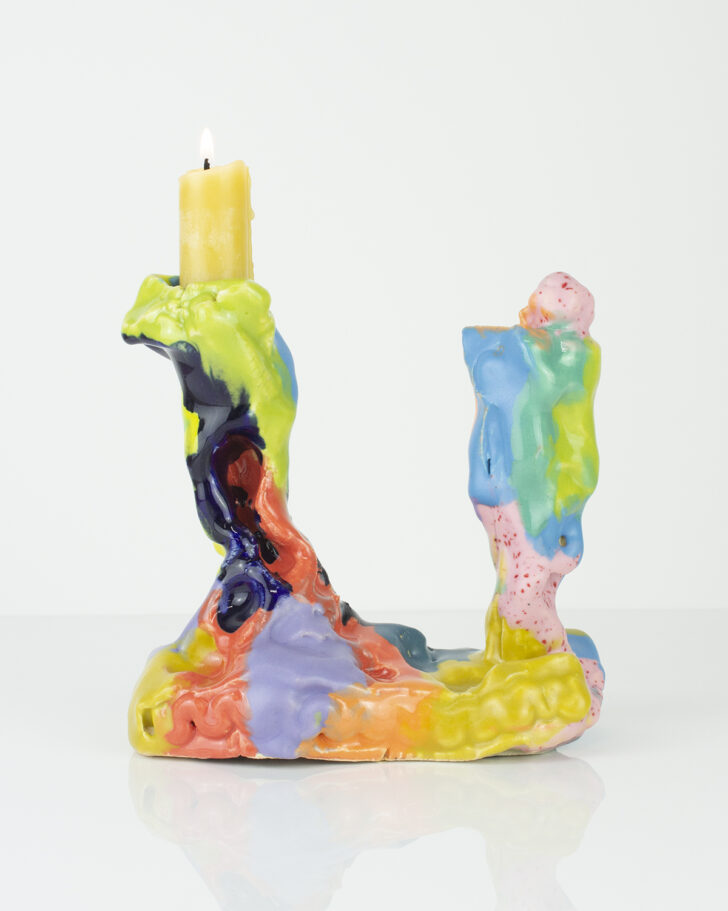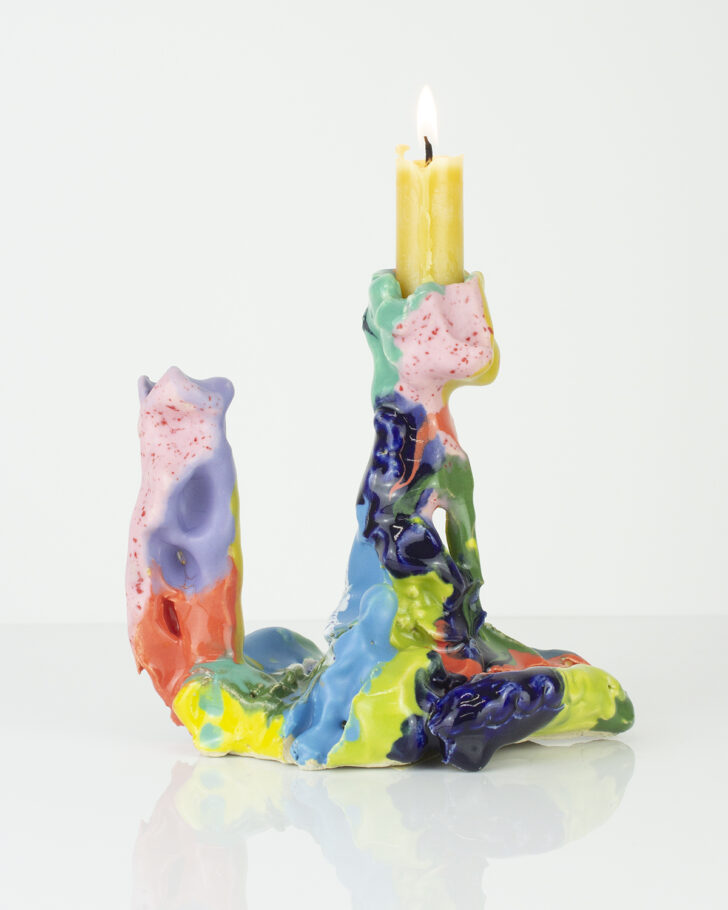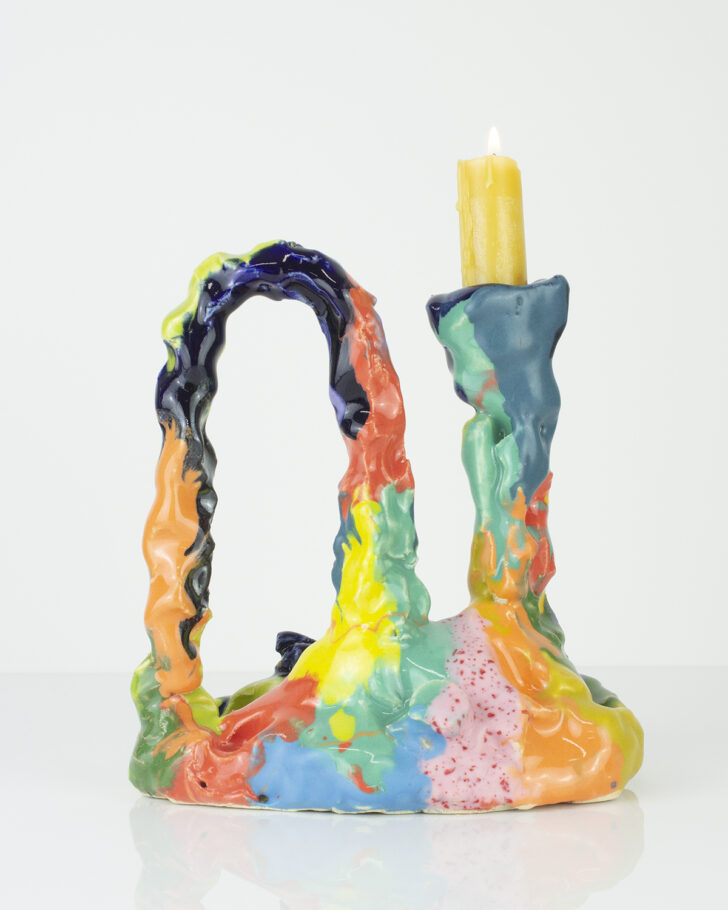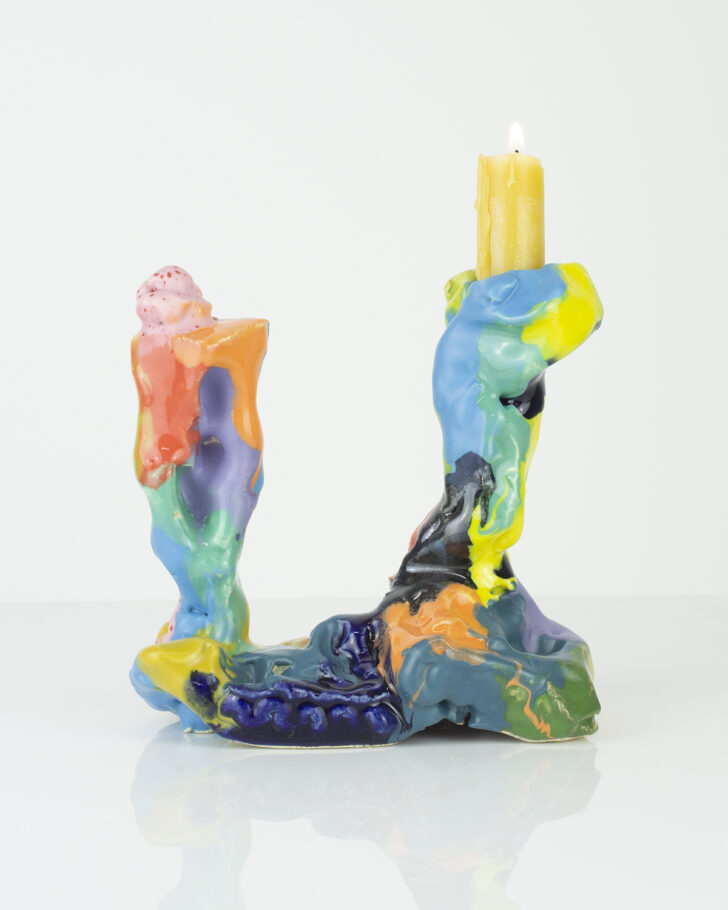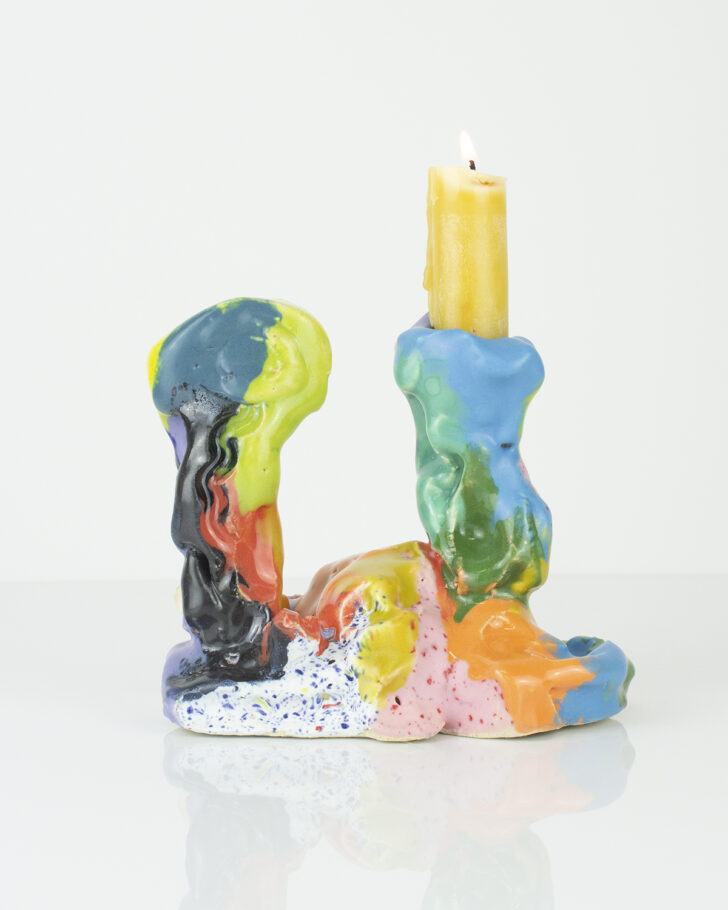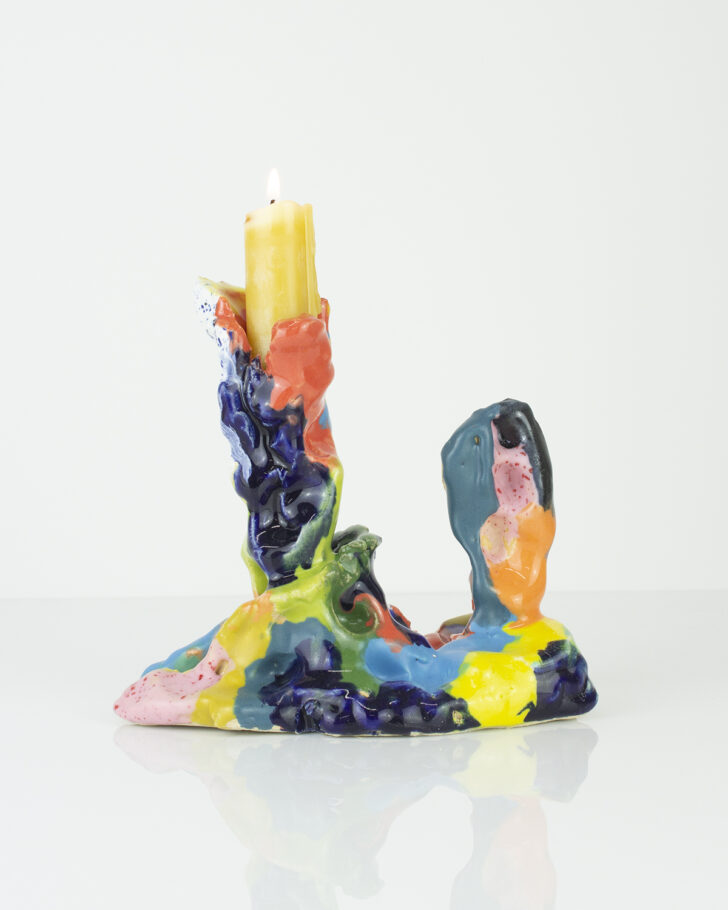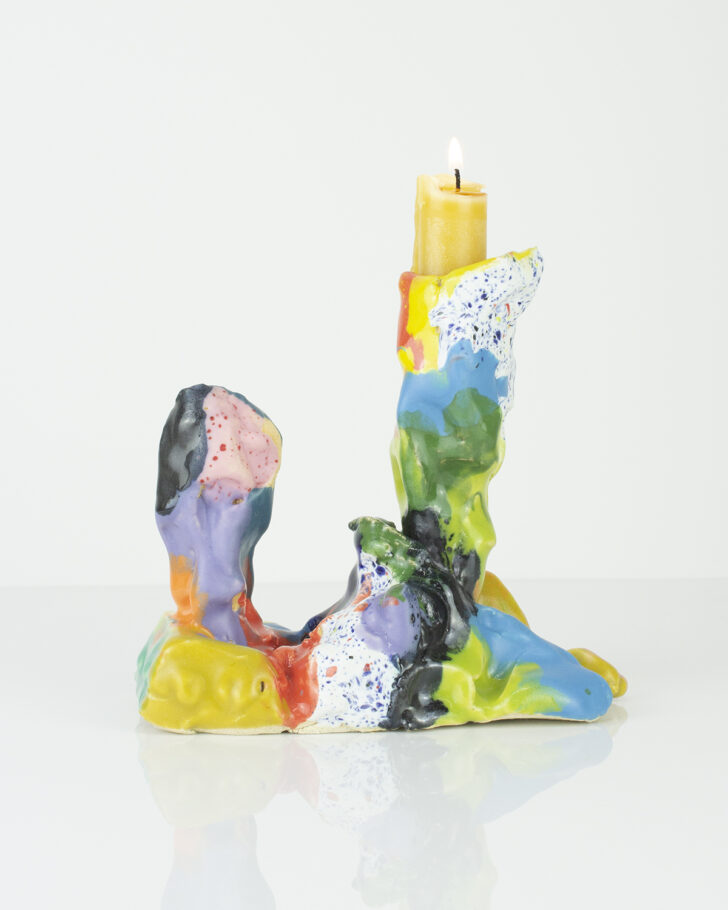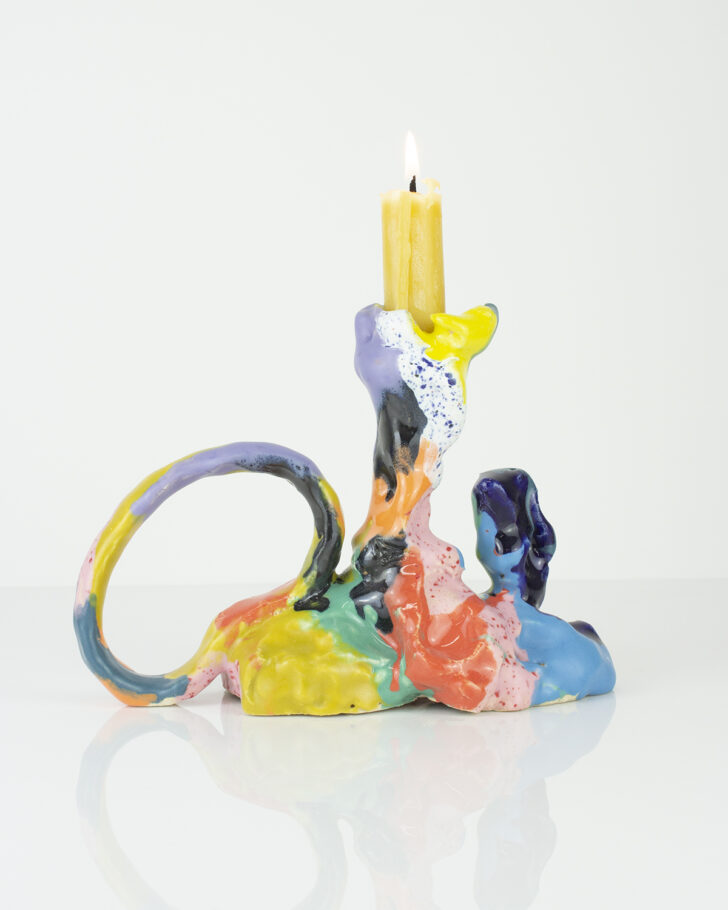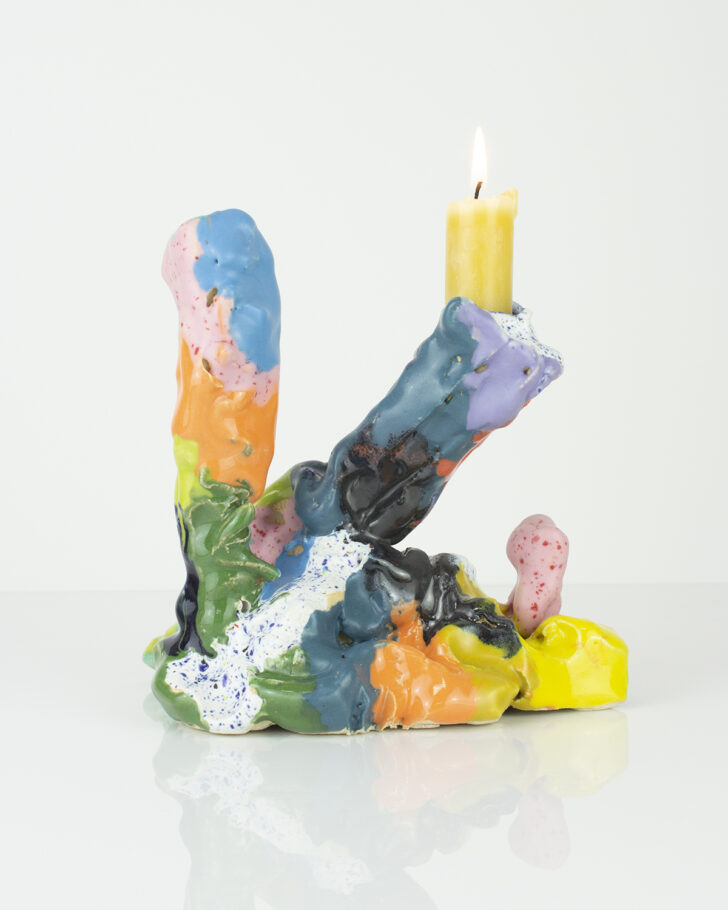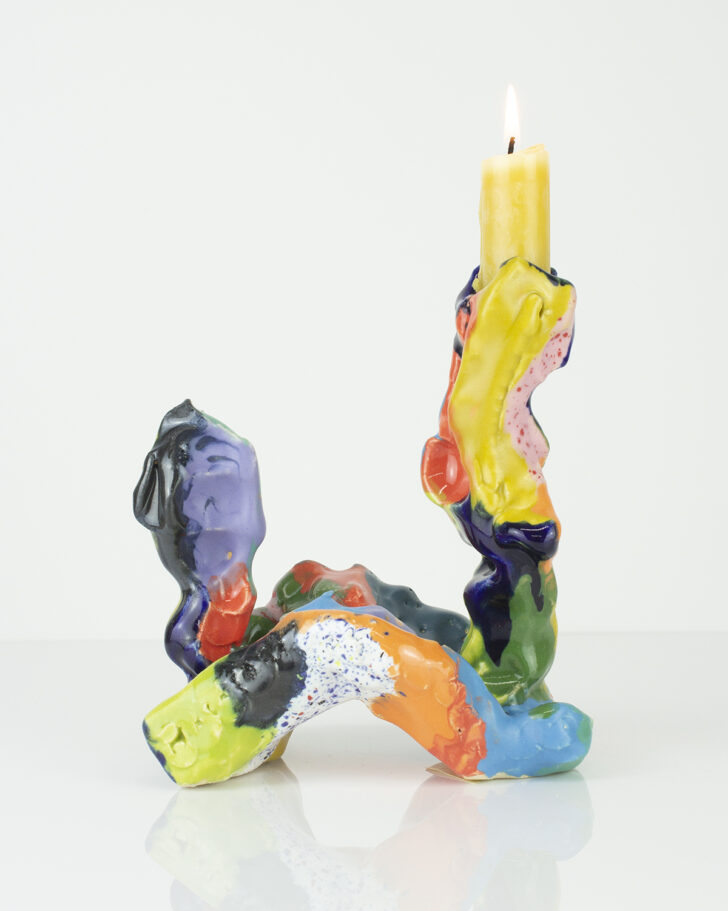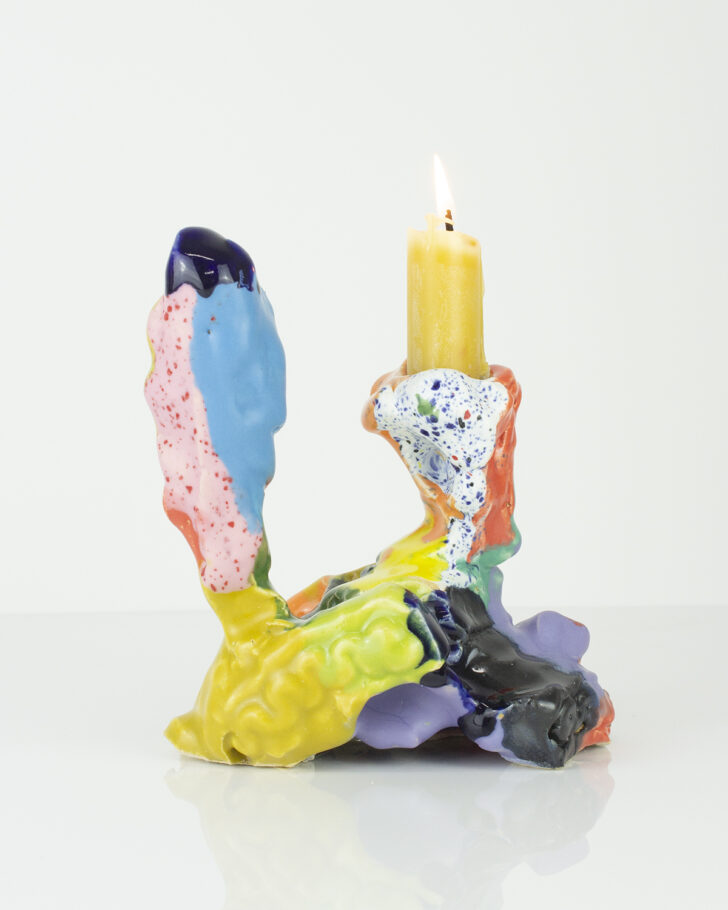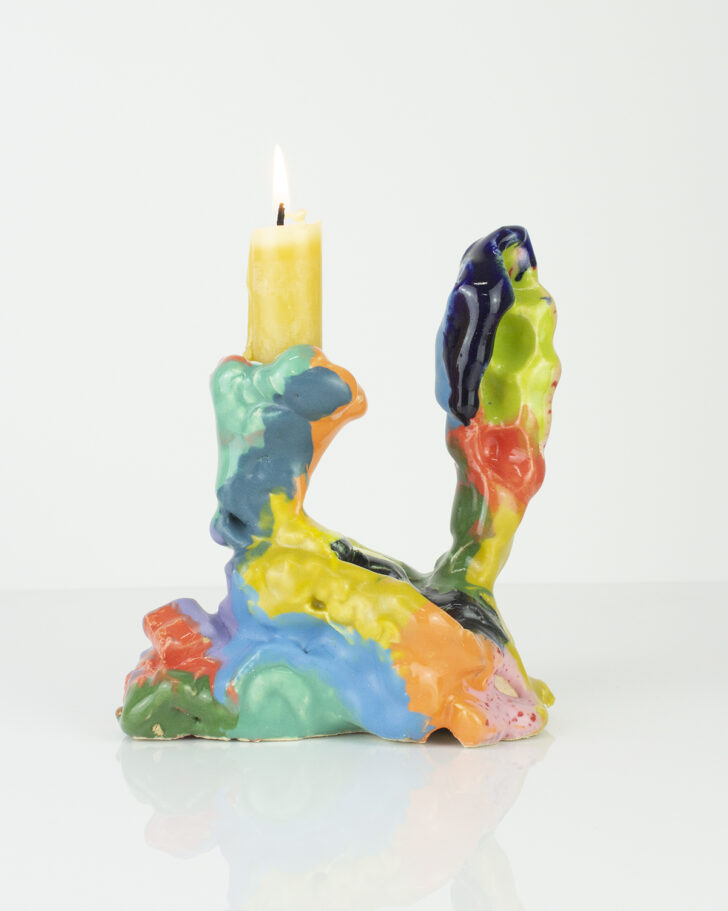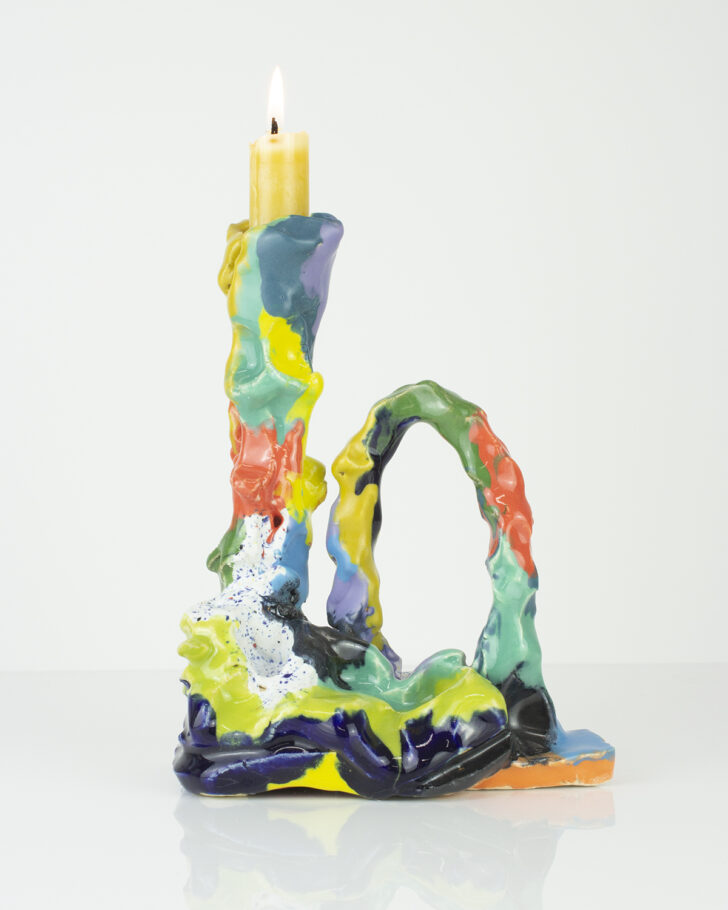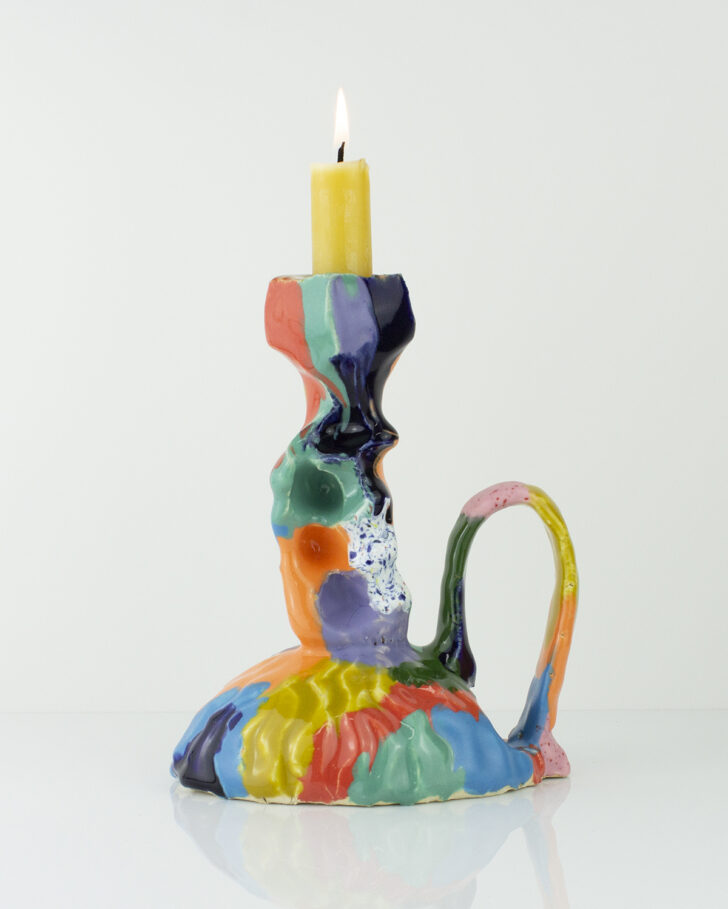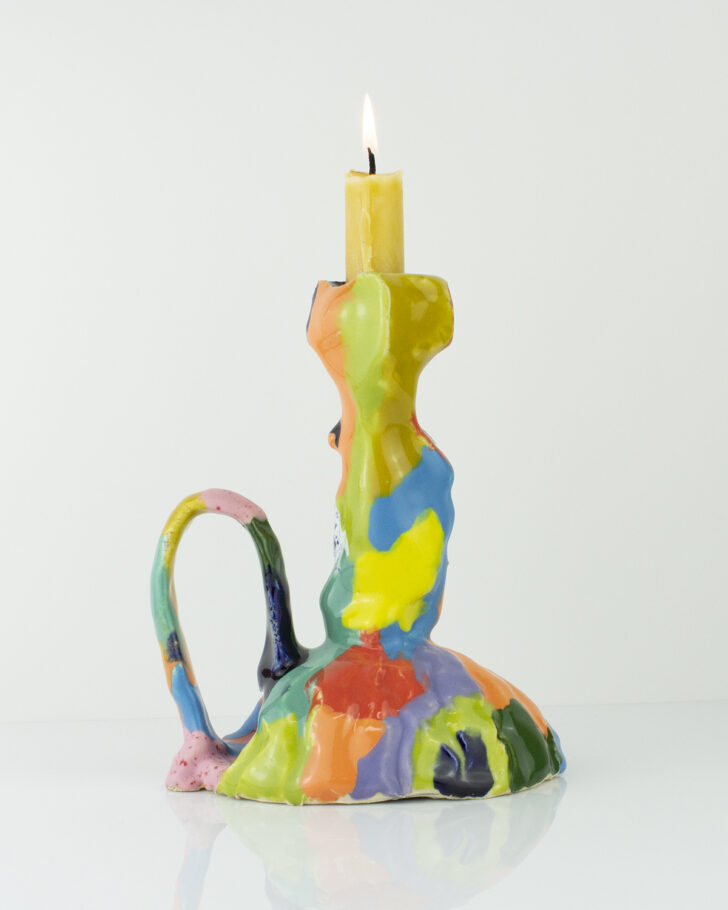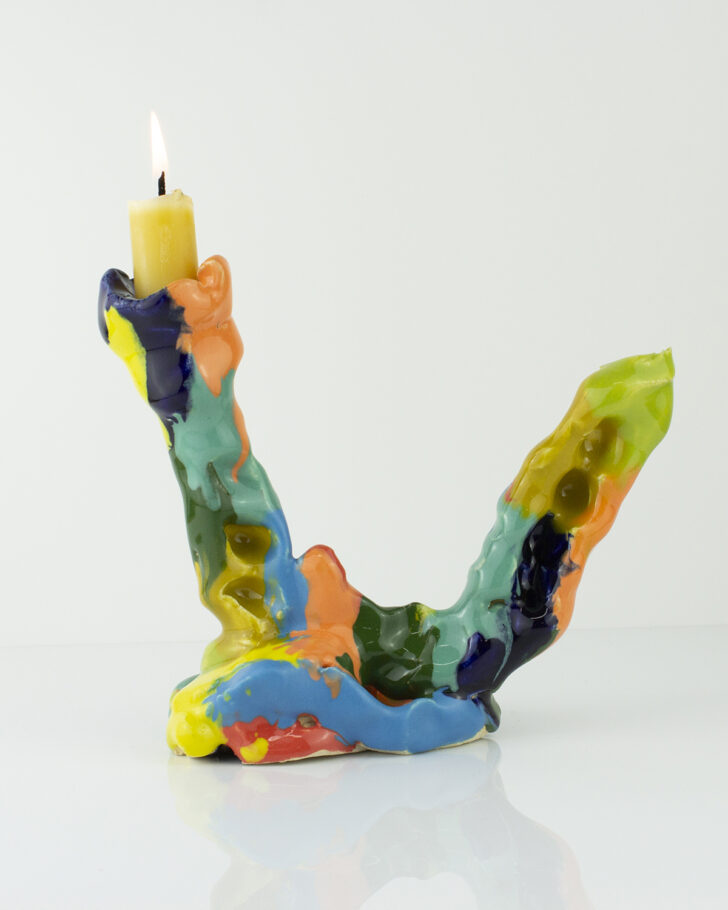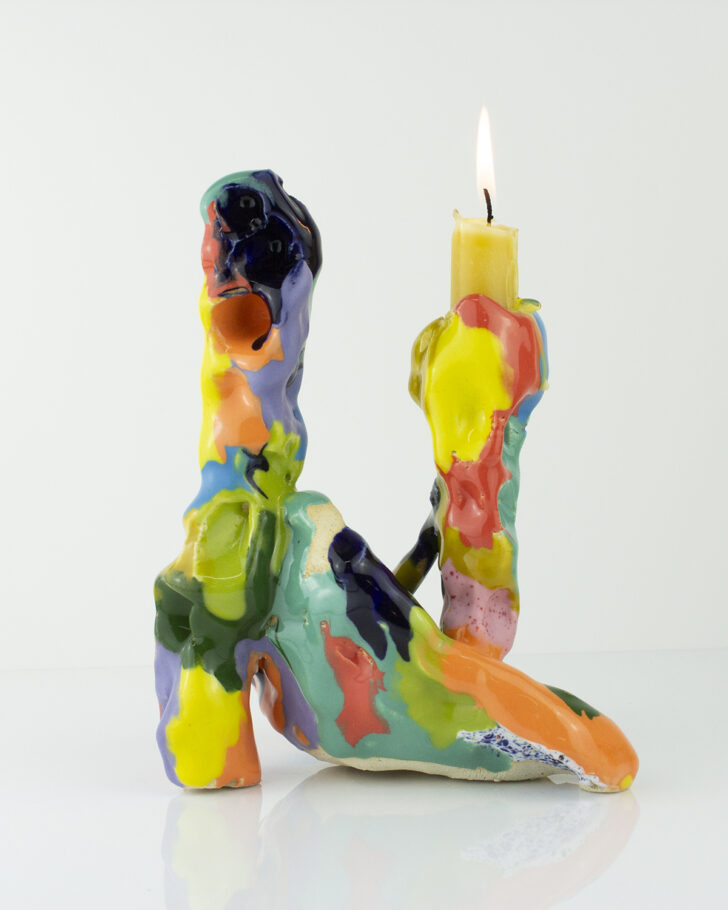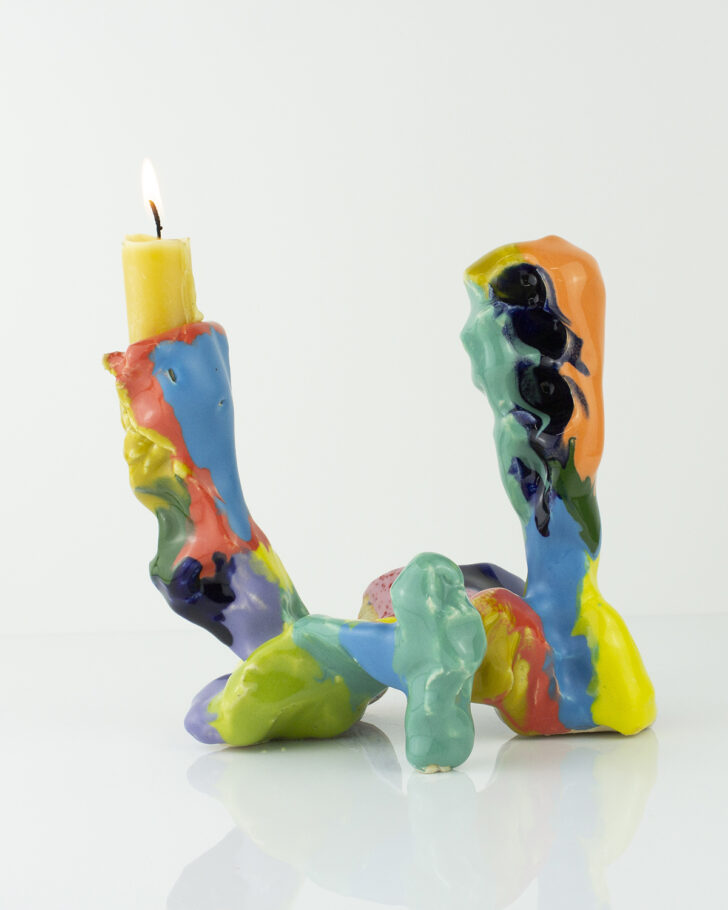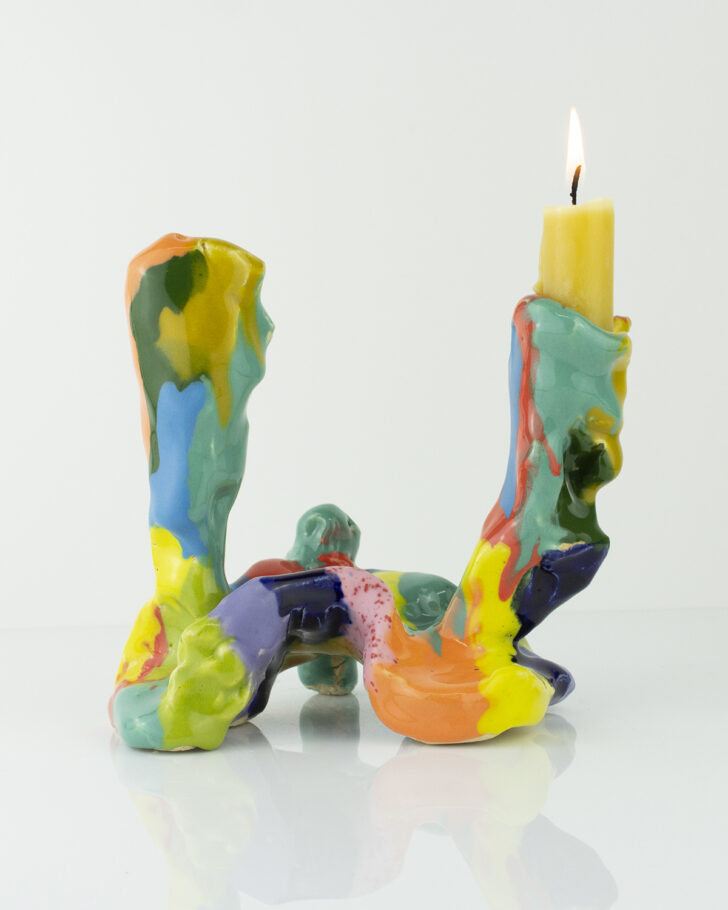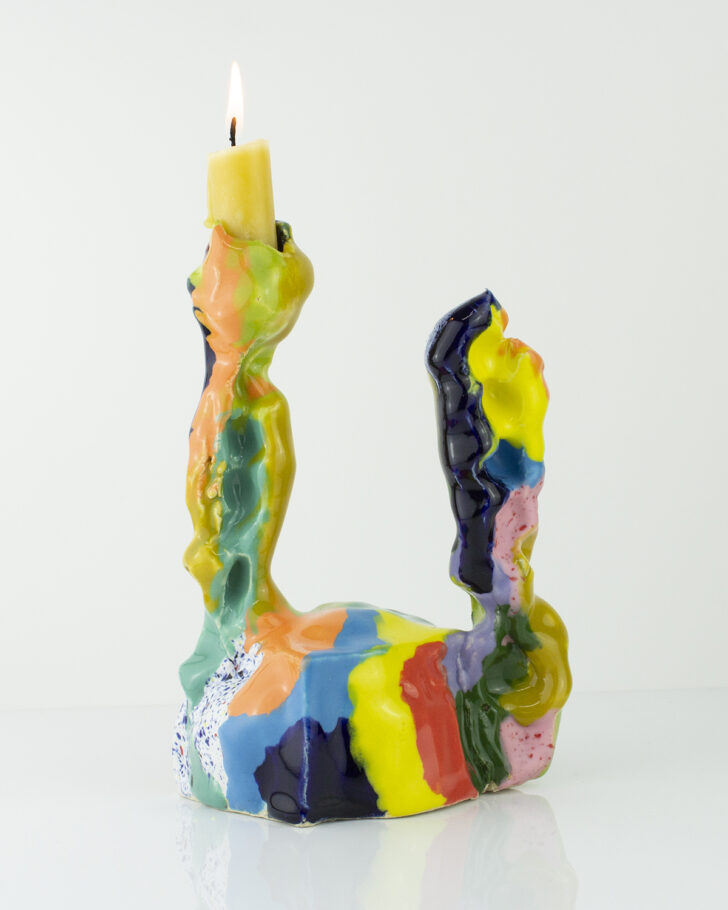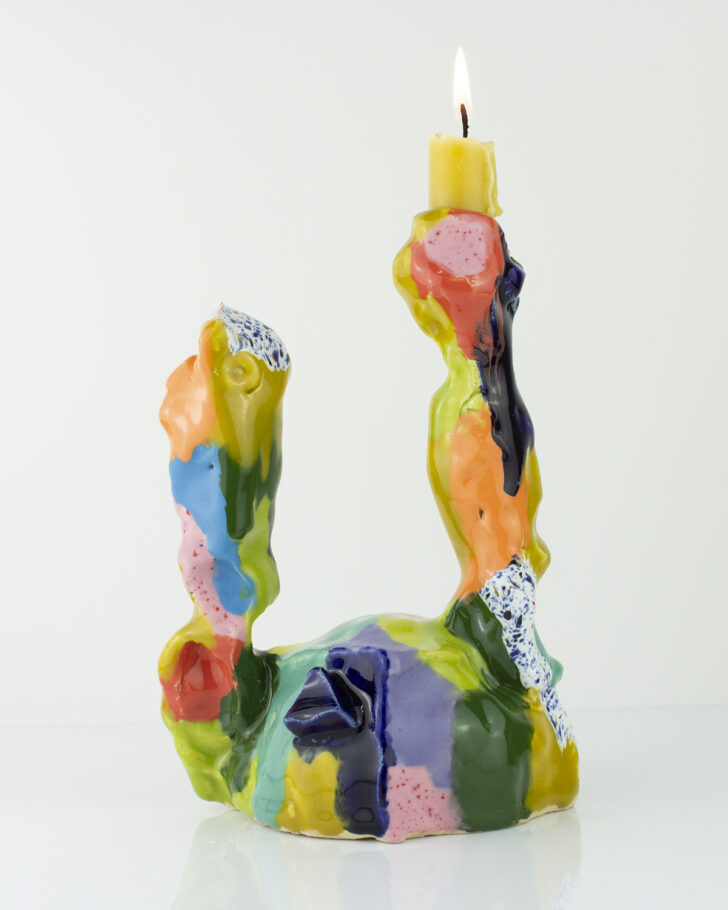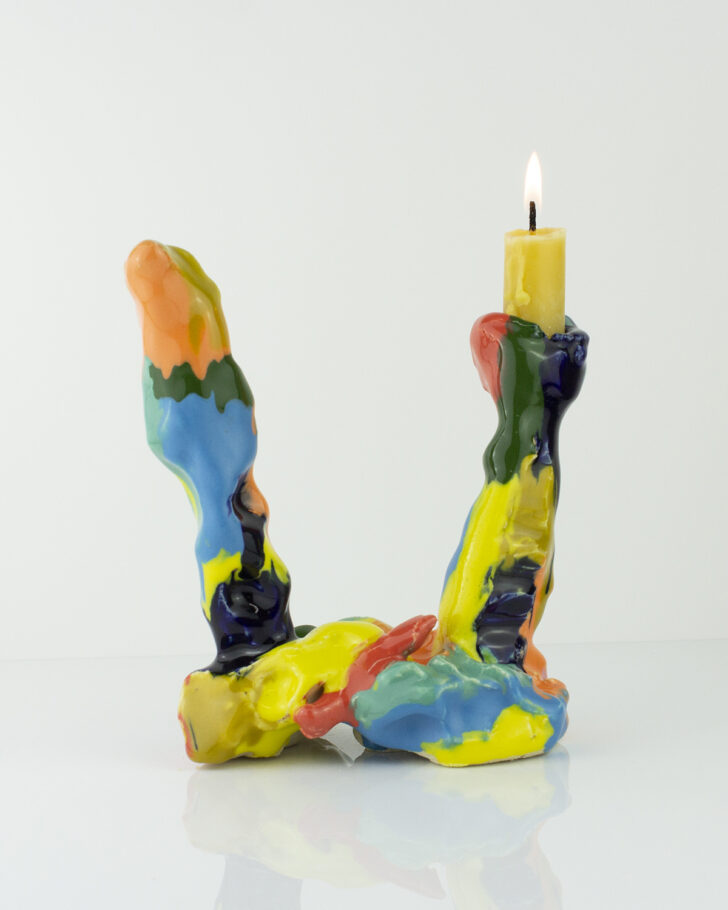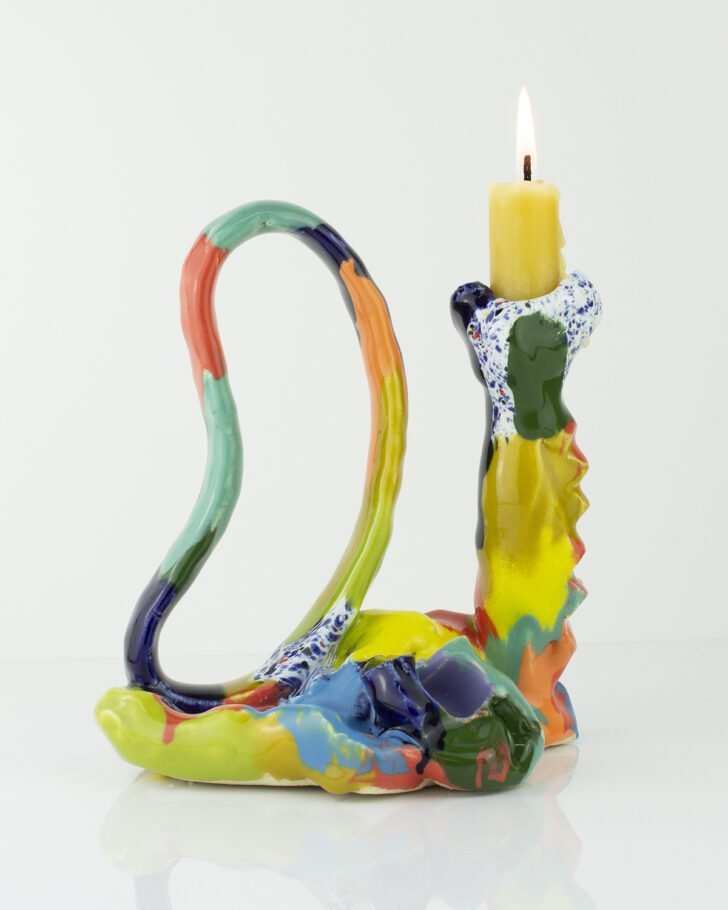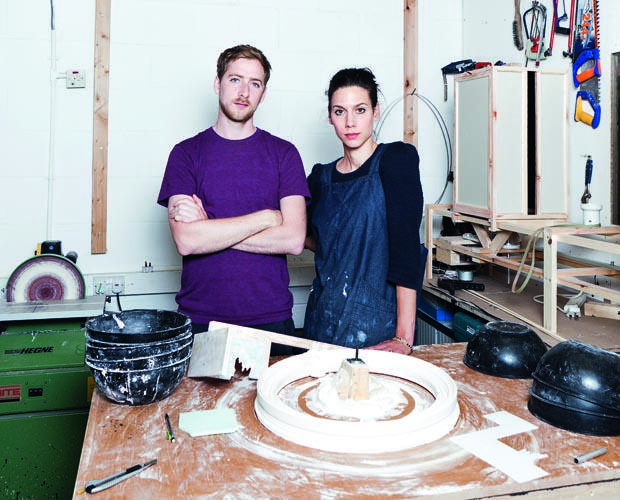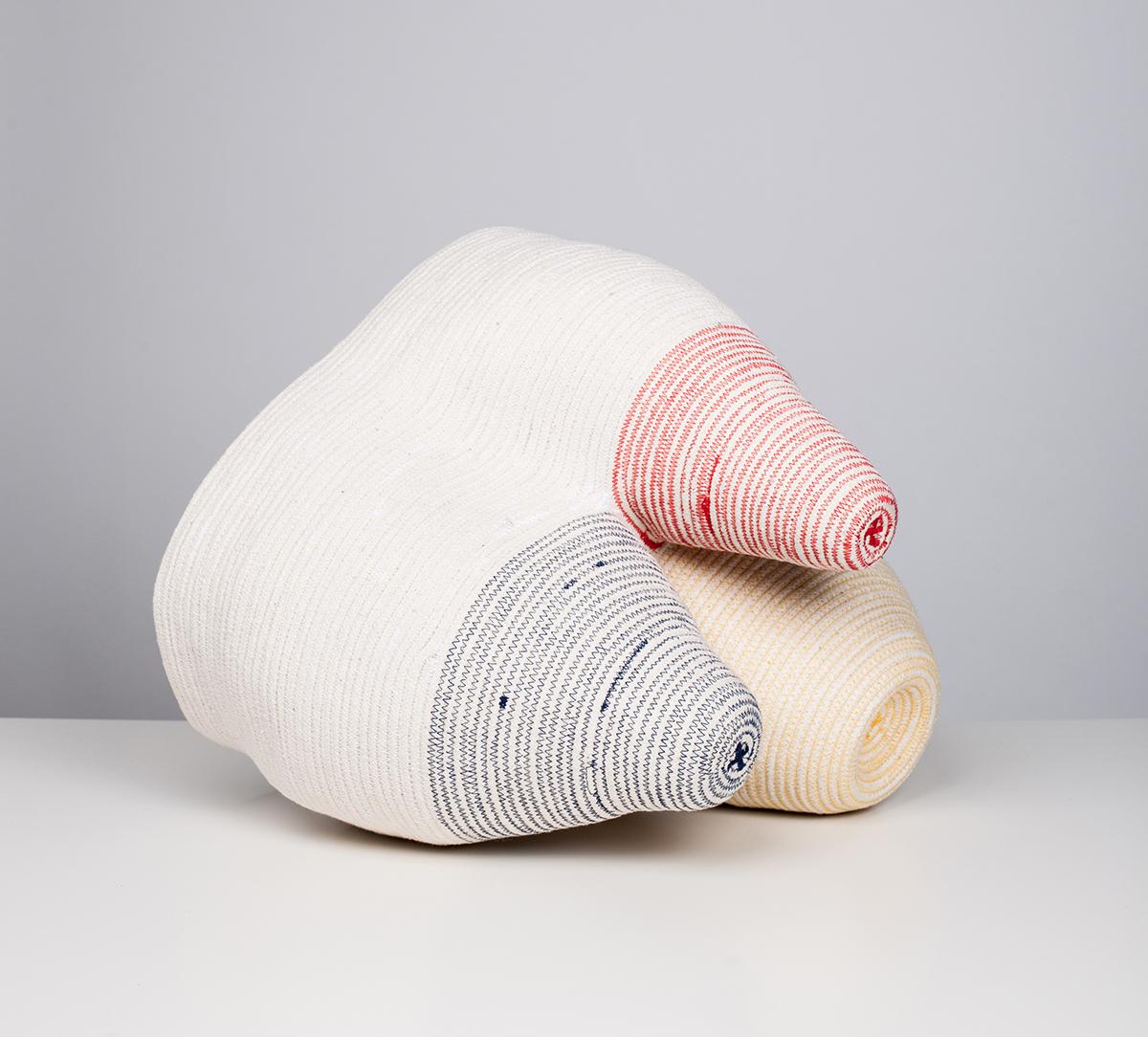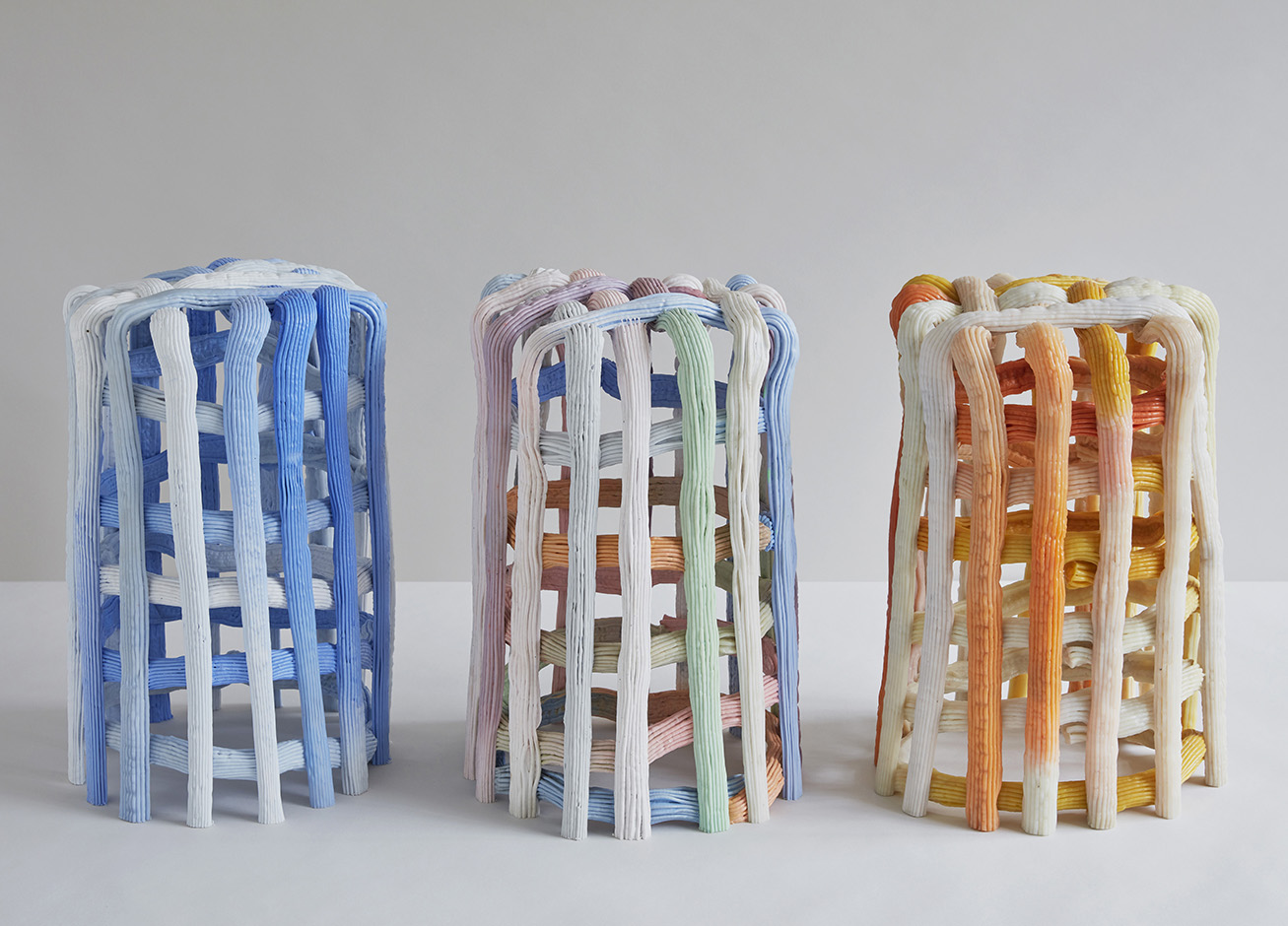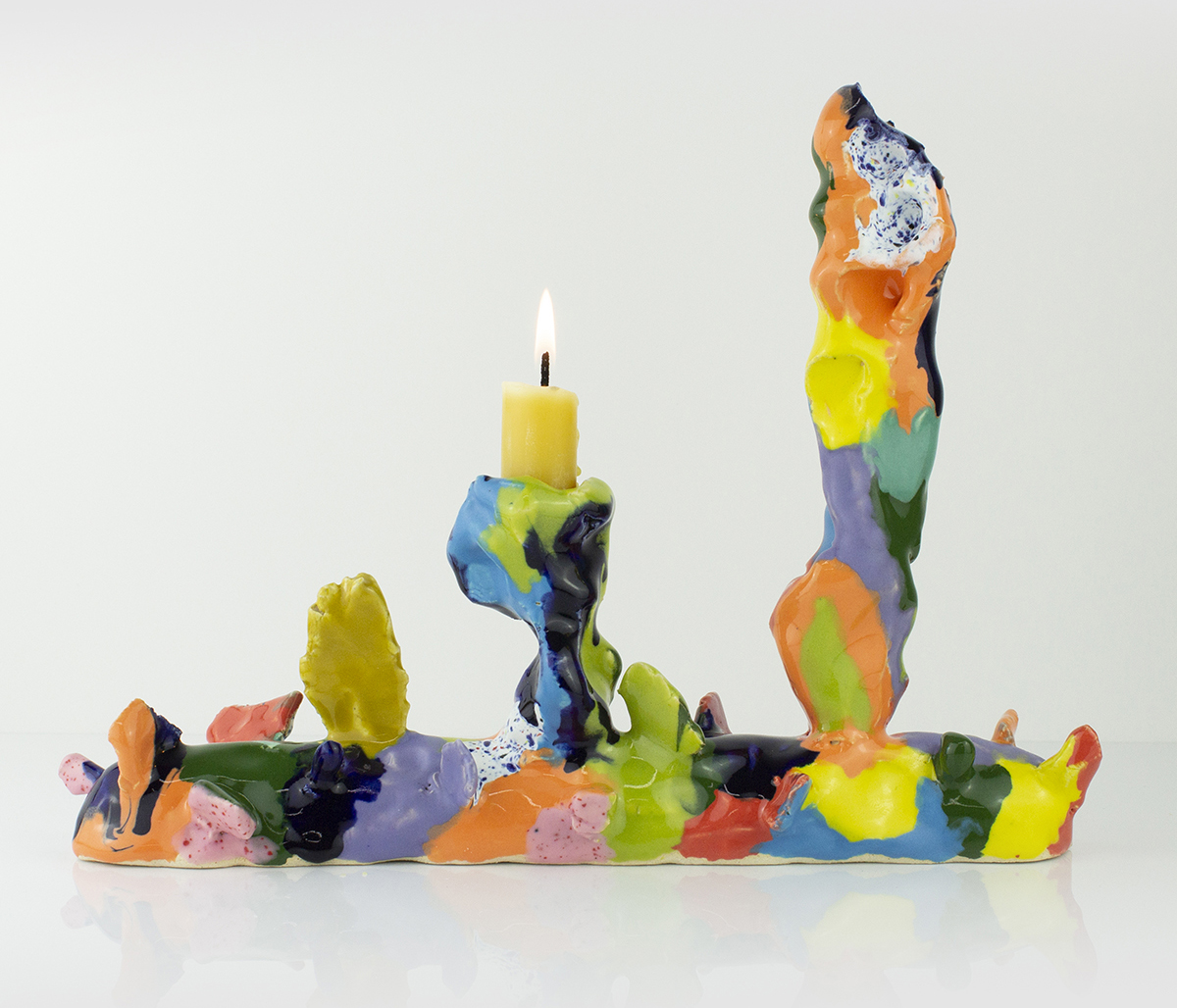
02.14.22
Up and Coming
The Ceramicist Whose Practice Ranges from Old Timey Candlesticks to 3-D Printed Vessels
Keith Simpson’s Instagram handle, @earlyamericanrobotpottery, concisely captures both his approach and his aesthetic. Conceptually, the name conjures a foundational past — the kind of hewing to fundamentals and tradition that’s often associated with nostalgic Americana. At the same time, it hints at the possibilities of artificial intelligence and machine technology, tools that the New York–based ceramicist readily seeks out in order to explore the future possibilities of this millennia-old medium.
Simpson began his practice using traditional methods at a community college near his hometown in eastern Washington State. To support himself during his BFA program at Kansas City Art Institute, he had a part-time job helping to print 3-D models for the auto and electronics industries; his role was to take the models off the machine and paint them to appear like the real thing, the unwitting maker of a thousand trompe-l’oeil sculptures. He now builds his own proprietary 3-D printers for printing ceramics.
When Simpson yearns to get back to basics, he creates these mottled, almost protozoan candlestick holders. Some appear like colorful worms, while others feature finger loops and are reminiscent of a Dickensian-era object, albeit melted and hyper-colored. These candlestick holders couldn’t be further from the high-tech precision and choreography of Simpson’s 3-D printed vessels. Simpson explains: “The candlesticks are very primordial in the way they are formed. I squeeze out a whole bunch of clay and let it dry on a table to a specific point, then I assemble them very quickly.” The palette of the candleholders are equally intuitive and improvised, originating from the leftover colors he had after a show he did with Fort Makers in Brooklyn, NY.
For Simpson, he toggles back and forth between the two poles of tradition and innovation: “I build my own machines. I design my own pump and my own material slurries, and these 3-D printing machines can weave together multiple materials. Doing that by hand is difficult.” In the next breath, Simpson ponders the importance of traditional methods, the clay itself, the touch of the maker: “How does the clay respond to the touch of my hand?” Far from being an either-or choice or a close-ended question, it is the artist’s embrace of versatility and multivalence.
